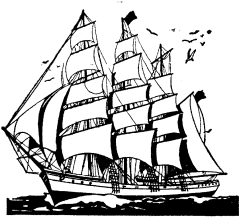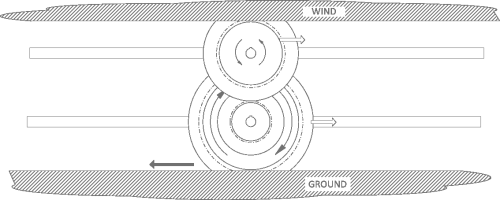 There is a vigorous debate going on about whether it’s possible to build a vehicle that uses only wind power to accelerate to a speed that is higher than the speed of the wind and in the same direction as the wind itself (a phenomenon referred to as Downwind Faster Than the Wind or DWFTTW). You can see a summary of the debate here and a video of an actual cart going at 2.8 times the speed of the wind here.
There is a vigorous debate going on about whether it’s possible to build a vehicle that uses only wind power to accelerate to a speed that is higher than the speed of the wind and in the same direction as the wind itself (a phenomenon referred to as Downwind Faster Than the Wind or DWFTTW). You can see a summary of the debate here and a video of an actual cart going at 2.8 times the speed of the wind here.
It’s quite amazing and counter-intuitive that it works, but it seems to, beyond the shadow of a doubt. It’s so amazing that lots of people still refuse the evidence, and the whole thing has been declared impossible by more than one physicist based on energy considerations.
Well, those energy considerations are misguided as I hope to show in an extremely simple way. Actually, the whole thing has very little to do with energy (the wind is providing plenty of that) and everything to do with simple mechanics. Actually, once you’ve wrapped your head around it, it’s quite breathtaking that such a simple idea wasn’t discovered before.
In order to understand a problem, it’s useful to simplify it and reduce the number of variables to a minimum. In this case, the lossy nature of the forces between the cart and the wind is a complicating factor.
As a simplification, I will make the whole system perfect. I will replace the wind and the ground with solid racks and the propeller and wheels with gears that are bound together and that are constrained to move only horizontally:
It’s a good way to visualize the forces and constraints of the system if it were perfect and to understand how it has to work.
Let’s first constrain the top rack (the wind) to be stationary and the ground to start moving to the left. The bottom gear, which is constrained to only move horizontally, seems to have only one choice: it can only start rotating clockwise.
Now if the bottom gear rotates clockwise, then the top gear will have to follow and start rotating counter-clockwise. And the only way it can do that is by moving to the right. Now what enables the wind and ground to move relatively to each other is that the bottom gear is made from two gears so that the speed of the teeth of the outer gear is higher than the speed of the teeth of the top gear.
The inevitable conclusion is that the whole gear system will have to move to the right with a speed that is determined by the speed by which the ground is moving and by the ratio in the sizes of the gears.
By a simple change in referential, the exact same system but where the ground is fixed and the wind is moving to the right, it should be clear that the whole system has no choice but to move to the right faster than the wind.
In summary, there is only one solution for this constrained system, and it implies the gear system to move faster and in the same direction as the top board.
QED. Now the only difference between this and the real wind-based system is that the latter is much lossier and far from perfect. Still, it has no choice but to pick up speed and get faster than the wind.